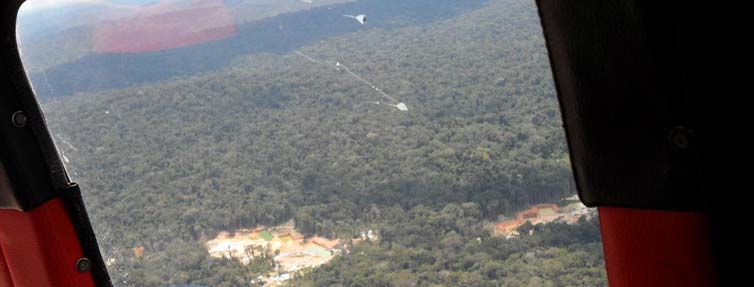Small-scale gold mining is a cross-border phenomenon. Many small-scale miners in the Amazon are migrants. Gold deposits are not divided by the political frontiers between nations. The pollution of rivers and sky goes across borders as well.
Miners go after the gold. As such, they migrate across national borders, as well as between regions in one country. In Suriname, an estimated 65-75 percent of the miners are Brazilian. In Peru, most small-scale gold miners in the lowlands come from the Andes region. And in Colombia, the Afro-Colombian artisanal miners in the Chocó region have to compete in their territory with miners who come from elsewhere in the country.
The development of infrastructure in the Amazon contributes to the mobility of miners. The Brazilian miners going to Surinam used to cross the border by land, but nowadays just take the plane. The construction of the Inter Oceanic Highway, which connects Peru and Brazil by land, made the remote Madre de Dios region in Peru more accessible. Consequently, mining activities along the highway increased. But also the Peruvian government became more present in this area, trying to control the mining activities.
Gold fields are often located in densely forested and difficult accessible regions. Far away from the national power centers. There is little border control to register the movements of persons and goods. Mercury and gasoline are purchased at lower prices across borders and taken to the gold mining areas. And the extracted gold is sold in places with the highest price. Gold is smuggled across country borders without paying for royalties in the country where the gold was extracted. National policies affect migration flows and the informal economy. Therefore, it is vital to look at small-scale gold mining from a cross-border, regional perspective, instead of just a national one.
Read more about GOMIAM’s regional case studies:
Read more:
Perz, S. et al. (2013) Trans-boundary infrastructure and land cover change: Highway paving and community-level deforestation in a tri-national frontier in the Amazon.
Pinto, M. (2008). A vida no limite: atividades ilegais, migração irregular e direitos humanos na fronteira entre o estado do Amapá e Guiana Francesa.
GOMIAM publications:
Tedesco, Leticia (2013). No Trecho dos Garimpos: Mobilidade, Gênero e Modos de Viver na Garimpagem de Ouro Amazônica. Phd Thesis Universidade Federal do Rio Grande do Sul. Porto Alegre.

